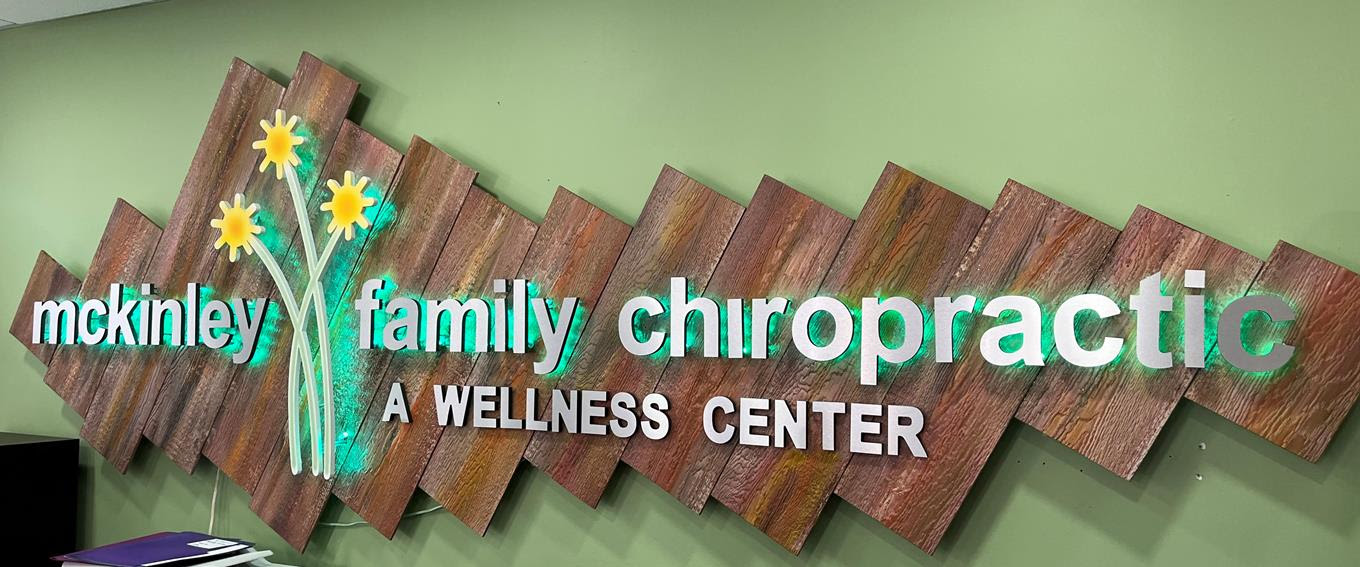by McKinley Family Chiropractic
Share
by McKinley Family Chiropractic
Share
The Body as a Machine
If you compare your body to a simple machine, you see that it has many similarities:
- Moving parts designed for locomotion (i.e. joints, muscles, and ligaments),
- A fuel distribution system providing energy to the moving parts (circulation and digestion),
- An on-board computer to regulate all these systems (brain),
- An electrical system to connect the computer to the rest of the body
When everything works properly, your human “machine” can be considered healthy.
Alignment Helps Movement
One of the most important components of your health is alignment. This is because it influences your body’s movement, balance, stability, strength, and flexibility.
Movement is essential to life. Without it, your blood would not circulate, your digestion would stop, and you would find it impossible to breathe. Movement and alignment are as critical to your health as air and water. Where two different bones meet to form a joint, their alignment and construction determines the movements that are possible. Think about the difference between your hip and your elbow. The elbow moves in a single plane (a hinge joint), while the hip can move in several different planes (a ball and socket joint). Change your alignment and you alter the movements that are possible, including limiting your joint’s range of motion.
How easy is it to move a joint also depends on its alignment. Muscles are located around a joint in such a way so they move easily to their proper position. But when joints are not aligned properly, muscles can lose their flexibility.

Your body is constructed with over 350 joints. Alignment and the stress faced by any joint will be affected by its relationship to the position and function of other joints. This relationship is called the kinetic chain.
When you’re faced with joint problems, it’s important to consider this kinetic chain. We understand this relationship, and when we evaluate a patient we perform a thorough analysis of the chain to detemine the exact cause of the problem.
Misalignment Causes Damage and Pain
What happens when your joints go out of alignment? You’re likely to suffer from not only joint problems such as acute sprains, strains, and chronic postural misalignments, but, if your nervous systems is compromised, you may experience visceral symptoms as well. If left untreated, most of us will suffer at least one of these harmful conditions at some point in our lives.
Luckily, your immune system is self repairing and, if working properly, can usually correct for minor damage and misalignment. Get proper rest and nutrition, make sure nervous system input to the organs of immunity is at 100%, and your body should take care of itself.
Chronic Misalignment and Strain Correction
When a strain on a joint is too great or lasts too long, you body’s self-repair system may get overwhelmed. If this happens this is where we come in, to help correct the problem. Different factors influence the course of correction. These include the severity of injury, how long ago the injury occurred, the cause of the misalignment, the number of tissues involved in the injury, you body’s level of health and wellness, and the level of stress (physical, biochemical, psychological) present in your life. When we work with patients to correct the problem we take all these factors into account.
A Lesson on Compound Interest…. Just like investing your money, it is vital to invest in your health, and just like your money, sometimes you won’t see the advancements until you’re further down the line. There is no better time to start than right now. Making small contributions to your health will begin to pay […]
Kick Start Your 2025 with a Solid Routine We hope everyone had a great holiday, but unfortunately, it is time to get back to the real world and all of the fun that comes with it. One of the best ways to do that is by re-establishing a routine. The beginning of the year is […]





